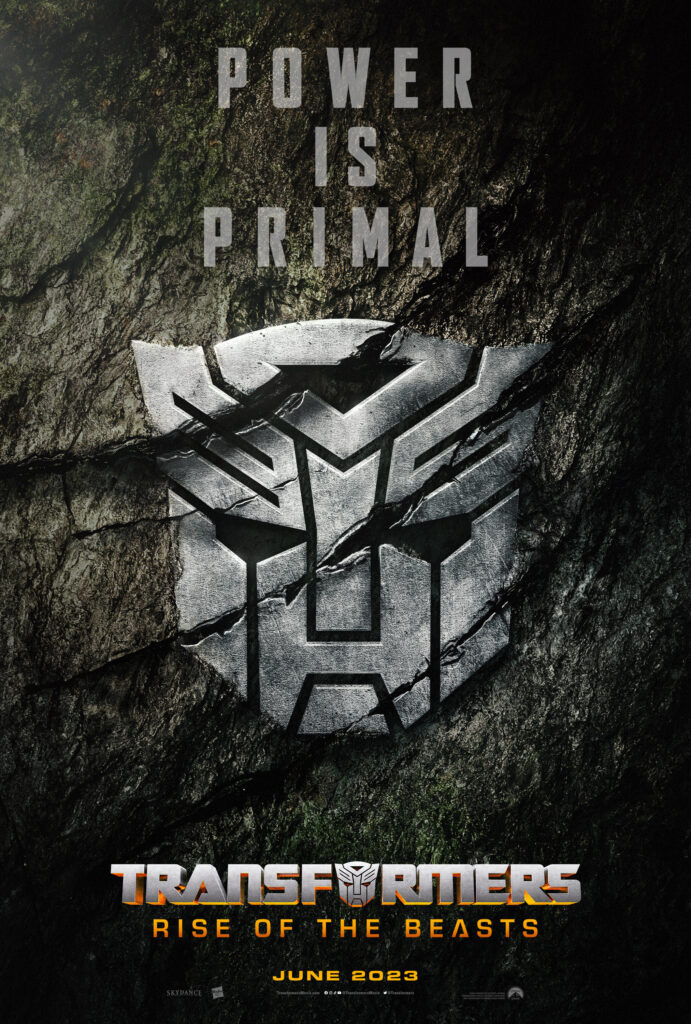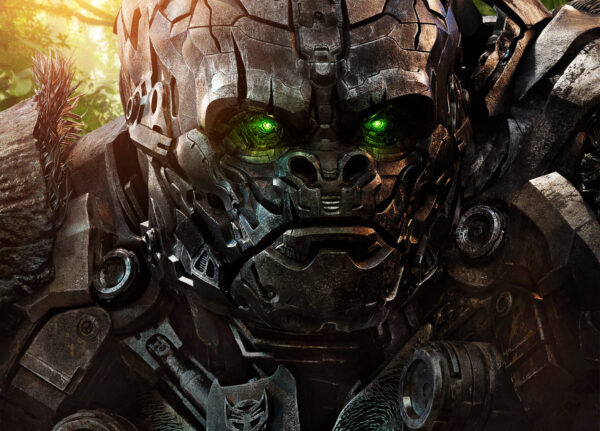Steven Caple Jr. had his contemporary film scene breakout moment following the Sundance premiere of his directorial feature-film debut, the 2016 skateboarding drama The Land. The film introduced audiences to an exciting new voice in American cinema, and its positive reception opened doors to studio projects with bigger stars and even bigger budgets. Caple was then tapped by Black Panther director and Creed producer Ryan Coogler to take the reins of Creed II, the first sequel to the Rocky spin-off franchise. His sophomore release confirmed that Caple was both game for and proficient in taking marquee projects from major studios, which all led to the news that his third feature would be the latest installment in Paramount’s much-loved Transformers franchise. Scheduled for a summer theatrical release, Steven Caple Jr.’s Transformers: Rise of the Beasts promises to deliver more of the action-packed adventure that has made its franchise one of the highest-earning film series at the global box office. Boxoffice Pro spoke with the director to discover what drew him to the project—and tease what’s in store for fans of the robot-car franchise.
The Transformers series is one of the biggest movie franchises in the world. It’s filmmaking at a scale that few get to practice. How did you become attached to this project and why did it seem like the right choice at the right time?
As we sort of grow as filmmakers, we always try to challenge ourselves and explore new avenues and different types of adventures. My very first feature was The Land. It was a dramatic film that premiered at Sundance, but it had a lot of heart and a sports element to it. I carried that over to Creed II, which had another kind of action-packed sports element. When it was time to choose my next project, it came down to trying to grow as a filmmaker, and as a person, and saying, what haven’t I done before? Transformers is a franchise I love, movies that I go back to and watch in terms of looking at their visual effects, the spectacle, and how they’re able to incorporate a specific style into such a big scope. I’ve always wanted to get a shot at directing a movie like that, adding my voice to a project this size. A lot of doors opened for me as a director after Creed II—but I kept coming back to Transformers. It always spoke to me, a chance to work on something I loved as a kid. I was drawn to the chance to bring these creatures to life in an action movie. It’s honestly a dream come true, especially as someone who loved the movies and watched the cartoons as a kid.
Any new entry in the Transformers series is going to be a global theatrical event, a complete Friday night for audiences all over the world. There was a period during the pandemic, however, when it wasn’t clear that movies of this scale would continue being global theatrical experiences. How much does it mean to you that this film has a big theatrical release?
We were still in the middle of the pandemic when I received the script for Transformers: Rise of the Beasts. The entire world was shut down. Production was stopped everywhere; no one was shooting. There came a point where we didn’t even have the certainty of how many movie theater screens would be around by the time we finished it. But we never wavered from our commitment to making this a cinematic experience. Everything in this movie was made with a moviegoing audience in mind, to give people that theatrical experience they can only have at the movies. Having Paramount back us in making this movie at this scale, especially when we didn’t know what the world would look like by the time we finished shooting, it meant a lot to me. Paramount really supported me and my vision as we put this thing together. We were working on this movie before Godzilla vs. Kong had come out, before Tenet had even hit theaters. Hats off to Christopher Nolan and all those filmmakers who actually took the leap and fought for a theatrical release for their films at that time. For myself, making a movie during that time gave the production an additional level of passion behind it. I don’t want people to just watch this movie, I want them to experience it—and the only way to do that is through a theatrical release. That’s the only true way to experience a Transformers movie. As filmmakers, we put so much of ourselves into a movie that we want to make sure audiences can experience our movies in the best way possible. For this movie, we traveled to so many locations around the world—New York, Iceland, Machu Pichu in Peru—we set out to highlight all these different cultures and locations so they could be seen on a big screen.
Before Creed II only three other directors had made a Rocky or Creed movie. It’s a similar situation with Transformers: Rise of the Beasts; only two other directors before you have helmed this series. How do you balance that legacy of what others have built in a franchise, while still making it your own?
That’s a great point. I made Creed II when there had only been three other directors that came before me in that entire franchise. It’s a similar spot I found myself in with Transformers. You have Michael Bay, who launched it, and you also have Travis Knight, who made Bumblebee. These guys delivered great movies, and I came into this film appreciating everything they brought to the franchise. It’s easier to take on that responsibility when you’re a fan of their work; it takes away from the pressure of living up to what they did because you’re making the movie from a fan’s perspective. It allows you to make the type of movie you’d like to see yourself if you were in the audience.
One of my big contributions to this film was the characters. That’s always a focus in the way I approach my films. Our cast has actors like Eddy Ramos, and Dominique Fishback—people who look more like me and the people in my family. I also had the chance to create new robots that we’ve never seen on the big screen before, from the Maximals to new Autobots. I was able to implement my voice in these characters. I came into this movie knowing there were things that worked really well from those who came before me. I considered myself as a bridge who could drive this series in a new direction.
In directing a film of this magnitude, you also get to have a major studio like Paramount foot the bill for the latest filmmaking technology at your disposal.
For sure, and a lot of that came through the production side. What I like about this franchise, what separates it from the rest—and I won’t name-drop anyone else’s movies—but we shot very limited green screen work for this movie. We shot in locations that hadn’t been captured on film before. It was great to sit down and figure out the sort of equipment we’d be taking to these places. I was able to play a lot with wire cams, creating shots I’d never had a chance to try before. We rigged up a special Steadicam to shoot sequences whenever we had one of our robots in a shot, giving it a little push of realism in order to avoid having the entire sequence feel like it was designed on a computer.
Honestly, the most exciting technology we used in this film has nothing to do with filmmaking—it was all about the vehicles! We worked with carmakers like Porsche and brought in some cars that don’t even exist anymore. We built special cars and trucks ourselves for this movie—and they’re all real—we didn’t want to have CGI cars driving around in this movie. When it comes to the robots, yes, we definitely went with CGI for those animations. The world around them, the vehicles, the setting—everything is real and shot on set. That’s something I really pride myself on with this film, having the opportunity to go out and really blow things up instead of having a computer do that work for us.
Are there any moments in the film, that you can share, without divulging spoilers, that you’re excited to see with an audience on opening weekend?
Without spoiling the film? I can’t—but I will say that there is a moment toward the end of the movie that I’m really excited for people to see. We take the term “Autobot” and bring it to a whole new level. I can’t go into any more detail, but it’s a very emotionally powerful moment in the third act of the movie that you’ll recognize when you see it in a theater. I pay close attention to all my followers on Twitter—even the crazy fans out there—so I’ll be looking to see their reaction on social media after the movie comes out. I think audiences are going to be blown away by it when they see it on the big screen. Our climactic battle sequence at the end of the film is going to pay off in a big way. I can’t wait to see the reactions.
A lot of exhibitors are going to be looking forward to seeing new footage of this film for the first time at CinemaCon. What does the moviegoing experience mean to you, as a filmmaker?
The movie theater has always been an escape for me. It’s not only a hobby, it means everything to me. As a kid, that’s where I would go for an escape whenever I wasn’t at work or playing basketball—I used to play basketball in high school and college—so for me, it was always a chance to zone out from the world. I go to movie theaters almost every weekend since they reopened. Whether it’s with my wife or my family, we’ll watch anything from horror movies to indie films. It’s the only place I can fully disconnect from the outside world and be completely immersed in a story, especially now when we have so many distractions at our fingertips. I would love for people to feel the same way I feel when I walk into a movie theater. Being surrounded by an audience, where we’re all experiencing something simultaneously, it’s such a cathartic experience. You can watch movies anywhere today, but nothing will ever replace the experience of going to the movies.




Share this post